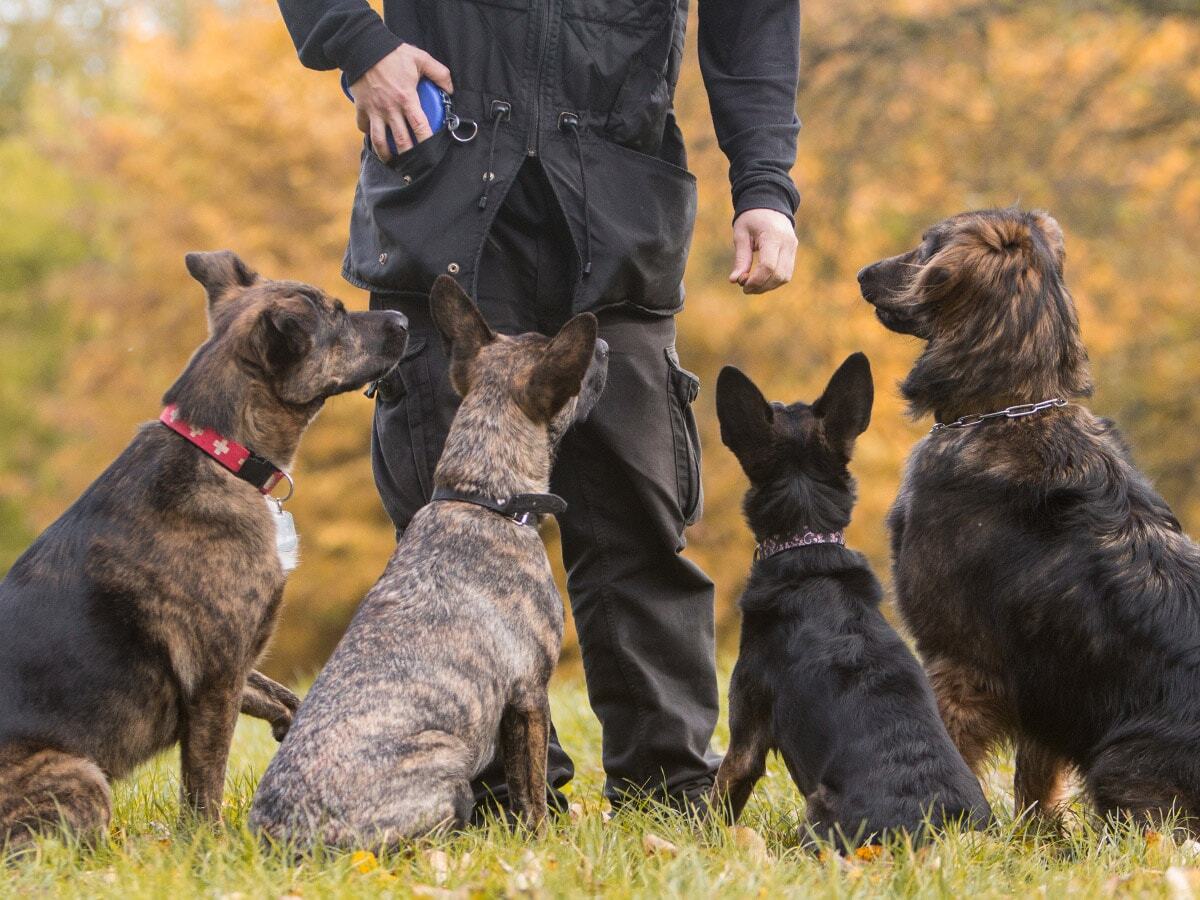
Let’s face it: when your dog is on their best behavior, they’re easier to love and care for! Dog training is a natural part of raising a puppy and turning them into a well-behaved dog, and your dog should at least learn the basics like walking with a leash or sitting on command.
Getting started with dog training basics doesn’t require a dog whisperer or expert skill ― all you need is a little knowledge, much patience, and plenty of treats to reward their successes and keep their tails wagging.
Let’s look at some specific training techniques, tips, and tricks that will make your dog the best-behaved canine on the block!
Before you start teaching your pup, you’ll want to gather a few supplies that will set the stage for their success. You’ll need a leash and collar (harness optional but super helpful), a target stick, and a dog crate that suits their size. Depending on the training methods you’re using and the behaviors you’re teaching, you may also want to hand feed your puppy.
This behaviour, has been recognized as one of the best dog training technique and also a very good way to built trust between the two of you.
The best approach to dog training is to pick one command at a time and be consistent with it. Most dogs can pick up basic actions like sitting, staying, and proper leash behavior at a fairly young age (before their first birthday).
Although, you should also be consistent and repeat the action regularly so that the action eventually becomes an habit.
Learning how to sit on command is a fairly basic trick, but it’s also one of the most important commands to learn. Once your dog learns to sit, you can use this command to interrupt bad behaviors when you catch your dog in the act.
Clickers work well when teaching your dog to sit. To do this successfully, you’ll give the command, then click as soon as your dog’s bottom touches the ground and hand over a treat. Be consistent with this process as well.
Teaching your dog to stay can be essential to their safety. You wouldn’t want them to follow you out into the street while retrieving mail or jump out of the car before you attach the leash.
To do this, experts recommend taking it a half step at a time. Tell your dog to stay, then take half a step backward. If your dog stays, give them a release word, such as “OK” or “Release” so they know they can move again. The next time you practice the trick, take a full step backward before releasing them.
This trick is easier to teach once your dog has mastered sitting.
To be more successful, is recommend as well to avoid sudden and risky movements that could agitate the dog.
Even if you don’t travel with your dog often, they need to know how to behave on a leash and be prepared for any trip away from home (such as going to the vet). Dogs who constantly pull on their leashes are putting themselves at risk of injury, plus it could increase your risk of tripping or falling.
The best method of leash training is simply to practice. Let your dog get used to the lease and correct bad behaviors as soon as they occur. If you have a large dog that loves to pull, a harness can help take some of the pressure off their neck and make it safer for them.
Responsible dog owners should teach their dog how to behave when other people come to visit. Dogs get so excited when they meet new friends and often jump on them as a form of greeting. However, this can be overwhelming to your guests, so it’s helpful to teach your dog not to jump on others.
When you see your dog jumping or about to jump on someone, tell your puppy to sit instead. Be consistent with this so the dog will learn that jumping isn’t acceptable. If your best friend continues to jump, tell him/her “No!” and immediately confine your buddy to a crate so they can associate their punishment with jumping.
The key to any of these dog training basics is consistency. You don’t want to let bad behaviors slide some days and not others, as this can delay the learning curve.
Also, you want to sistematically reward good behavior with treats to encourage your dog to repeat their actions. The more you reward, the more engaged they are and the more likely they are to stick with the training.
Last, but not least, it’s important not to over-train your dog or work on training when they’re simply not in the mood. It’s not productive for either of you, and you’ll end up feeling frustrated and exhausted with nothing to show for it.
Remember that as human beings have a limited period of time to stay really focused, dogs might have the same behaviour and so, better avoid to force them when it comes to training.
The best thing you can do is keep training sessions short, make them fun, and offer your dog plenty of praise and love. Having a well-behaved dog will be well worth all the time and effort you put into training.
Specially developed to keep your dog’s joints heathy, improve its coat volume, strengthen gums, stimulate digestion and support the immune system.

Specially developed to keep your dog’s joints healthy, improve its coat volume, strengthen gums, stimulate digestion and support the immune system.
Are you a dog trainer, breeder, or veterinarian? Join WE. team and help us improve dogs’ wellbeing.
Copyright 2023 © WE. Dog Collagen